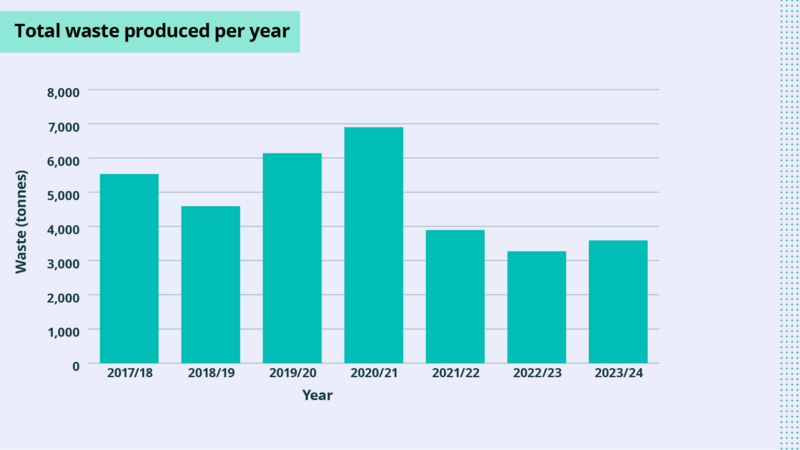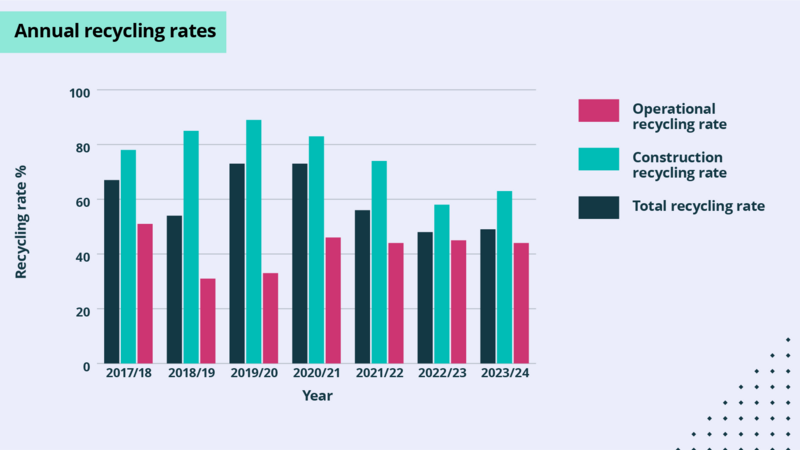Waste and circular economy progress
Total waste produced per year
The following graph shows the total waste produced on the University's operational estate between 2017-18 and 2023-24 in tonnes.

Summary
- There has been a significant decline in the total amount of waste produced annually since 2020-21.
- The large decrease in waste since the peak in 2020-21 is largely due to less construction waste as a result of fewer building projects. In future years we anticipate this downward trend in construction waste generation to continue as the University's Reshaping Our Estate programme should result in fewer new build projects.
Note
- Hazardous waste has only been included in our total waste data since 2022-23.
Annual recycling rates
The following graph provides the annual recycling rates (%) of the University's operational estate from operational waste, construction waste and total waste between 2017-18 and 2023-24.

Summary
- Recycling rates for construction waste are higher than for operational waste over all years since 2017-18.
- Construction waste has recycling rates that are consistently at or above 60%.
- Over the last 4 years operational recycling rates have steadied to between 44% and 46%.
- Total recycling rates were on a downward trend between 2019-20 and 2022-23. Between 2022-23 and 2023-24, total waste recycling rate increased by 1% and construction waste recycling rate increased by 5%.
Note
- Hazardous waste has only been included in our recycling rate data since 2022-23.
- Hazardous waste often requires incineration, thereby decreasing recycling rates.
- A change to the University's main waste contract in 2022-23 resulted in improvements in data quality, which suggested that previous recycling rates are likely to be over-estimated.
- Recycling also includes composted waste for reporting purposes.
- In 2023-24, waste collections by one supplier accounted for approximately 19% of total waste collected. This supplier reported composted waste as energy-from-waste, rather than as recycled waste, meaning this proportion of our waste is not included in the total recycling rate shown for 2023-24.
Additional and historic data
For our commitments and approach, please visit the Waste and circular economy page.
All previous Annual Environmental Sustainability Reports are available up to 2022-23. Our reporting approach changed from the 2023-24 year onwards to Our progress pages to make information more transparent and accessible. Qualitative progress against our commitments can be found within our Case studies. These will both be updated on an ongoing basis as new data and material becomes available.
You can also read about the University's work on environmental sustainability in its Annual Report and Financial Statements. Further operational environmental sustainability information is available on request using sustainability@admin.cam.ac.uk
